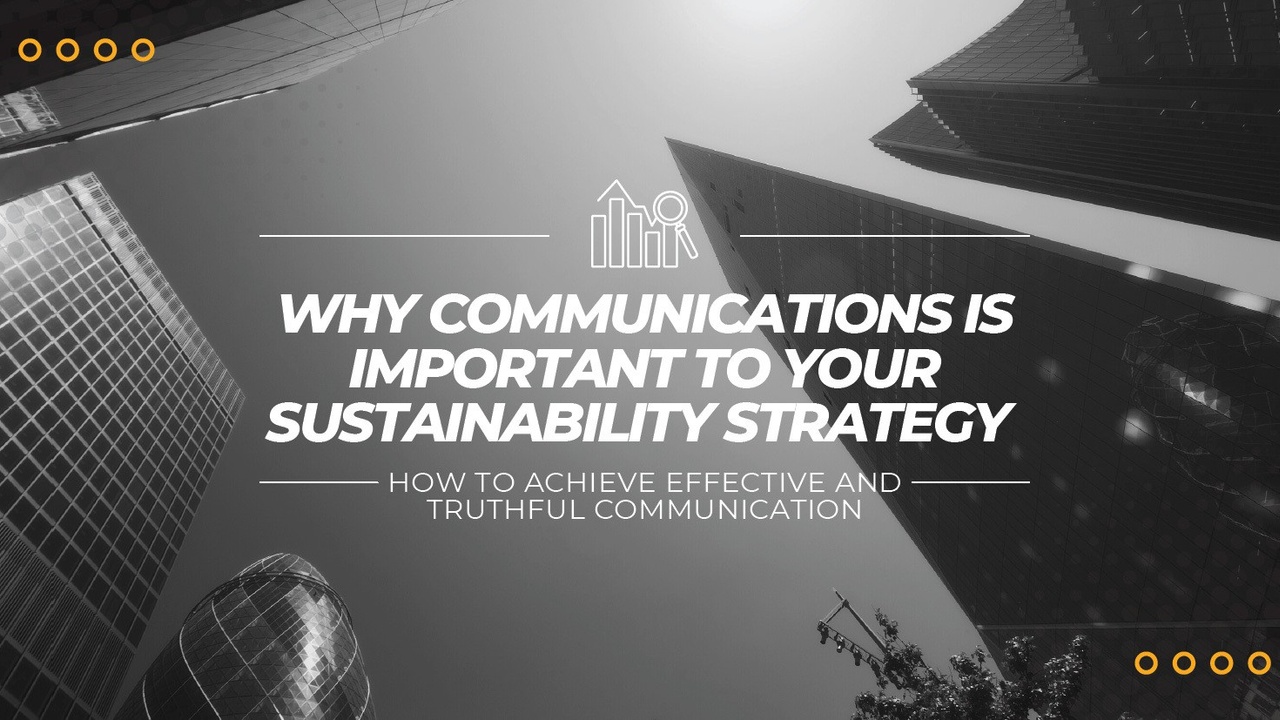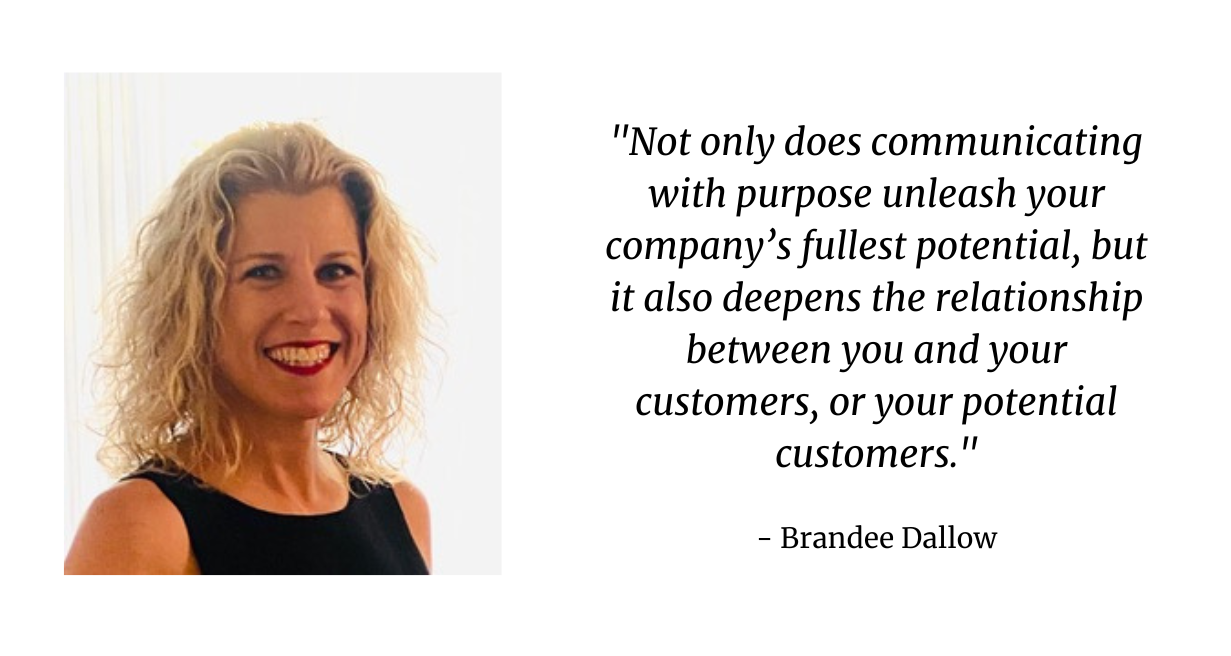
Living Room Session: Communicating Your Brand’s Sustainability Story - with Brandee Dallow
Sep 09, 2022
When it comes to communication about sustainability, we wanted to know how jewelers can share their passion, tell their story honestly, and back it up! Communications specialist, Brandee Dallow, joined us for the August Living Room session to talk about exactly that. We encourage you to view her full presentation at the recording of the session, but we have also pulled out some main takeaways for you below.
Through her past work experience, Brandee brings an understanding of the full jewelry supply chain and the roles that jewelry designers, manufacturers, and retailers play in that supply chain.
The August cover of Time magazine features a story titled, “How to do more good”. This can serve to show us that there is more and more messaging around responsible business practices being put out to consumers and the general public. Knowing this makes it that much more important to develop your communications very effectively.
Your communications relate to all aspects of your business and reflect your brand image to your audience. A consistent brand voice and messaging through all of your communications channels is key. Build strong customer relationships by reaching out to your customers on birthdays or other special occasions, without necessarily trying to sell something each time you reach out. Open communication with employees, if you have them, can increase morale and encourage creativity and innovation.
Explain what you are trying to do, and what you are actually doing.
When communicating about sustainability specifically, your customers want to know exactly what you are doing to be a good corporate citizen and to live more sustainably. According to a report from the Wharton School of Business at the University of Pennsylvania, over the last two years, the percentage of US retail consumers willing to spend more on products from socially and environmentally responsible brands increased across all generations.
It’s important to note that while traditional communications focus on sales and products, purpose driven communications are more about what you do and why you do it - nothing is arbitrary in sustainability communications so actual evidence to back up your claims is absolutely necessary.
Successful sustainability communications should be:
- Deliberate - aligned with brand purpose
- Accessible - no jargon, easily understandable
- Useful - audience focused clear takeaways
- Encouraging of further conversation
A 2014 Cohn & Wolfe study found that the number one quality or behavior which people demand of brands is communicating honestly about products and services. Show integrity through your actions - make public statements about your sustainability journey and goals once you have reasonable and clear benchmarks you can meet. These days, communication is a two way street so it’s important to be responsive to your audience. So if there is any negative feedback on any area your practices may still be lacking, having (sometimes awkward) conversations about it in a timely manner will bear greater fruit than just ignoring it.
Rules for good communication about sustainability:
- Communicate truthfully and comprehensively - describe your journey in detail
- Measure and communicate hard numbers & concrete plans - can your impact be illustrated with statistics?
- Use clear terms to avoid misrepresentation. Avoid ambiguous and misleading terms or expressions such as eco friendly, or green, as well as imagery that conveys environmental scenes that are viewed as positive but don’t relate directly to your product
- Use established frameworks to back up your claims - standards & certifications can be used officially or to guide your decision making
Dos/Don’ts:
- Do put your audience first - less technical language helps more people understand you
- Do analyze the language you’re using and ensure your language is specific to your actions and still relevant
- CSR & ESG are terms that have been commonly used by businesses, so Brandee took a moment to share with us her view on how they are similar and how they are different:
- Corporate Social Responsibility (CSR) - covers social, environmental, and economic concerns in your core policies, practices, and decision making. Generally self-regulated, qualitative nature makes it difficult to pin down. Serves as a starting point to get to the more measurable data.
- Environment Social Governance (ESG) - evaluate sustainability using quantitative results, quantitative performance indicators aligned to ESG criteria
- Lexology puts this as: “while CSR aims to make a business accountable, ESG criteria makes such businesses’ efforts measurable”
- Don’t use cliched language or overuse broad terms like “sustainability”
So how do we put all of these tips together in a communications toolkit?
Start with a strategy for how you will comprehensively share your story to keep messaging consistent.
- Write down your core attributes, accomplishments, and values.
- Second, make sure you have a clear mission statement describing the goals of your business.
- Then, make sure you have at least one dedicated section of your website to tell your story.
- Your toolkit should also include a consistent narrative and a vigorous PR program. Tell your story proactively.
- Lastly, you may consider including some standards & certifications in your toolkit.
Some in the industry believe that to truly prove your responsibility, you have to be certified via voluntary standards. Some bigger corporations are even requiring certifications from their wholesalers or suppliers. But for smaller businesses, it may not be feasible. Instead, you can use the freely available guidance documents often shared by standards organizations and see what parts can be applied in your own business. Is the core of your brand about responsible sourcing or are you doing other things you want to talk about? Think about what certifications can help show all of these aspects, whether through official participation or using them as guidelines.
Thank you, Brandee, for sharing your advice and tips with our Living Room audience.
“At the cross section of profit and purpose lives a successful business. Not only does communicating with purpose unleash your company’s fullest potential, but it also deepens the relationship between you and your customers, or your potential customers.” -Brandee Dallow
Join Our Community
Stay up-to-date with our latest content, industry news, and more.
Check your Inbox/Junk folder to confirm you want to receive emails from us. Don't worry, your information will not be shared.

